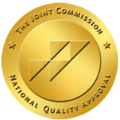HELP US BETTER MEET YOUR NEEDS BY TELLING US A LITTLE MORE ABOUT YOURSELF
Hydrocodone / Vicodin Detox
Hydrocodone is an opioid analgesic that is utilized in the formulation of many narcotic prescription drugs. Most often a prescription for these medications is a means to control moderate to severe pain. As an opiate drug, hydrocodone is in the same category as well known and potent drugs like morphine and oxycodone. As with most opioid substances, it has a high potential to lead to dependency, abuse and even addiction. Due to these risks, hydrocodone is considered a Schedule II Drug by the DEA.
Most Common Brand Name Drugs Containing Hydrocodone
- Vicodin
- Lortab
- Anexsia
- Lorcet
- Maxidone
- Xodol
- Norco
- Zydone
- Zamicet
- Zolvit
- Verdrocet
These and other medications are primarily a combination of hydrocodone and acetaminophen. The FDA has also approved a pure form of hydrocodone branded Zohydrio that is only supposed to be used for severe pain. There was even backlash over the initial approval of this drug over its increased potential for abuse.
Depending on the different medication, hydrocodone can be available in the form of:
- Syrups
- Tablets
- Capsules
Acetaminophen is a non-narcotic analgesic (pain reliever) and antipyretic (fever reducer) that raises the pain threshold, meaning greater stimulation is required for the nerves to feel pain. It also impacts a fever by acting on the part of the brain responsible for temperature regulation.
Common Side-Effects of Hydrocodone
- Nausea
- Vomiting
- Dizziness
- Sedation
- Drowsiness

Stats
When a drug like hydrocodone is used for something other than medical reasons or is taken in a way that ignores doctor recommendation, it is substance abuse. What may come as a surprise for many is hydrocodone has become one of the most widely consumed drugs. In the United States it has also become one of the most widely abused drugs.
According to the American Society of Addiction Medicine (ASAM), an estimated 2 million Americans had a substance use disorder involving prescription painkillers in 2015

ASAM states 20,101 overdose deaths in 2015 were from prescription painkillers

In 2015 122,000 adolescents (12-17) were addicted to prescription painkillers

The National Institute on Drug Abuse (NIDA) reports that America consumes practically 100% of the world’s hydrocodone

NIDA reported that in 2013 opioid-based prescription painkillers reached about 207 million in America.

Approximately 20% of those who abuse opiates like hydrocodone have a prescription for the drug

Because it is an opiate, the effects of hydrocodone are comparable to those of morphine and heroin. This is because the drugs all interact with the same parts of the brain, specifically the reward system. All this is what makes hydrocodone abuse such an issue.
Hydrocodone / Vicodin Abuse Factors
This semi-synthetic narcotic produces a calming effect while providing a state of euphoria. Because hydrocodone affects dopamine in the brain, after extended use the brain will develop a tolerance to the amounts taken and need higher doses to continue to feel the effects. This gradually escalation consistently increases the brain’s dependency, which creates addiction. Many medical experts believe that an addiction to hydrocodone can form within 1 to 4 weeks if a higher dosage is consumed on regular basis.
Hydrocodone causes a change in chemistry and normal functioning of the brain, thus it becomes very difficult for the people to stop using it once they have become addicted to it.
Because most forms of hydrocodone, such as Lortab or Vicodin, are immediate release they are generally inactive in approximately 4 to 6 hours. Some formulas are developed for extended release that last up to 12 hours per dose. Depending on the half-life of the dose, withdrawal symptoms can start sooner or later, so most who have become dependent on hydrocodone will start to experience withdrawals between 6 and 12 hours after the last dose.


Hydrocodone / Vicodin Withdrawal Symptoms
It is important to note that many things factor into the length and intensity of withdrawals.
Factors Effecting the Length and Intensity of Withdrawal
- How long the individual has been using hydrocodone
- The specific formulation of the drug
- Strength of the hydrocodone dosage
- Combination with other substances
- Method of consuming the drug
- Co-occurring medical or mental health issues
Hydrocodone can be injected or smoked, which may increase the dependence on the drug faster than taking orally. The withdrawal symptoms associated with hydrocodone can also range from mild, moderate or severe in some cases. Because of how opiate drugs like hydrocodone impact the body, suddenly discontinuing the drug can have extremely distressing side-effects.
Withdrawal Symptoms from Hydrocodone
- Runny nose
- Excessive tearing
- Stomach and chest pains
- Constipation
- Decreased appetite
- Blood in vomit, or stools
- Mental and physical exhaustion
- Depression
- Anxiety
- Headache
- Mood swings
- Restlessness
- Unconsciousness
- Excessive fatigue
- Sweating
- Blood shot or yellow eyes
- Difficulty in breathing
- Dry throat
- Pale skin
- Muscle twitches
- Irregular heart rate
- Thoughts of suicide
- High blood pressure
- Drug Cravings
NEED HELP IMMEDIATELY
Call
1-888-934-7256
Hydrocodone / Vicodin Medical Detox
Suddenly discontinuing hydrocodone or other opiates “cold turkey” without medical assistance is not the recommended method of detoxing. If someone develops a dependence on hydrocodone then a medical detox is the most safe and effective method of removing the drug from the body while dealing with any withdrawal symptoms.
With a medical detox program a professional medical staff should always closely monitor the individual’s progress. Because of the severe health risks presented by long-term hydrocodone abuse, or the discomfort and dangers associated with hydrocodone withdrawal symptoms, it is important to provide a stable environment where any adverse effects can be treated while the individual begins their healing process.
Sometimes medications can be utilized in order to ease the transition from active use. There are pharmaceutical options used during medical detox from hydrocodone that reduce withdrawal symptoms and help to prevent relapse in part by lowering the amount and intensity of drug cravings.
Medical detox is the optimal choice to minimize hydrocodone withdrawal and ensure safety and comfort through an otherwise painfully difficult period. A professional hydrocodone detox program will monitor vital signs around the clock and use necessary methods of support to keep patients comfortable and stabilized. The peak of withdrawal during the detox period is around 5-7 days in most cases. It is possible the medical detox process can actually shorten the length of time. The duration of the withdrawal period will also depend on the individual, severity of hydrocodone addiction, and length of time the drug was abused.
In the end there are several factors to hydrocodone detox, which is why having a comprehensive evaluation can be a huge help to establishing a personalized recovery plan.

Palm Healthcare Company
1177 George Bush Blvd.
Delray Beach, FL 33483
888-934-7256
Joint Commission accreditation and certification is recognized nationwide as a symbol of quality that reflects an organization’s commitment to meeting certain performance standards.



